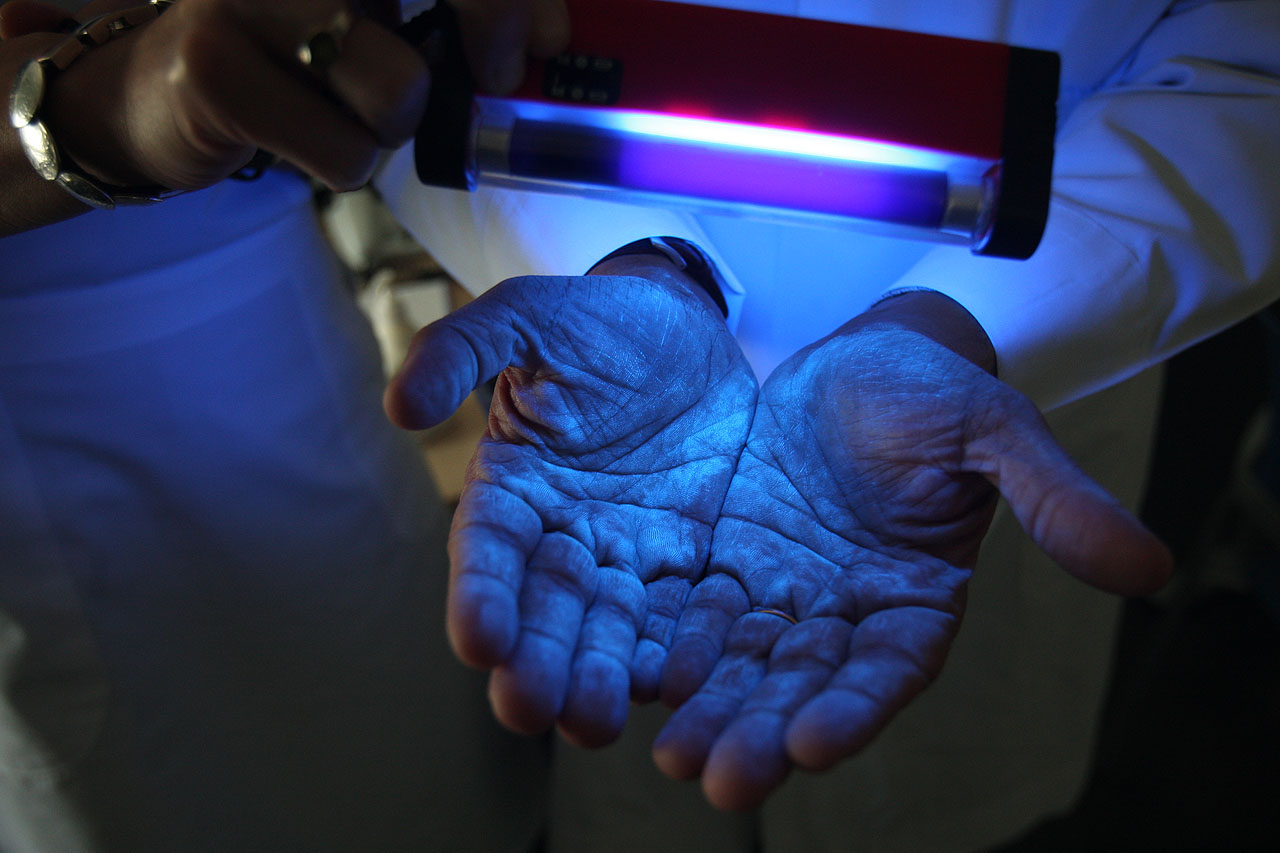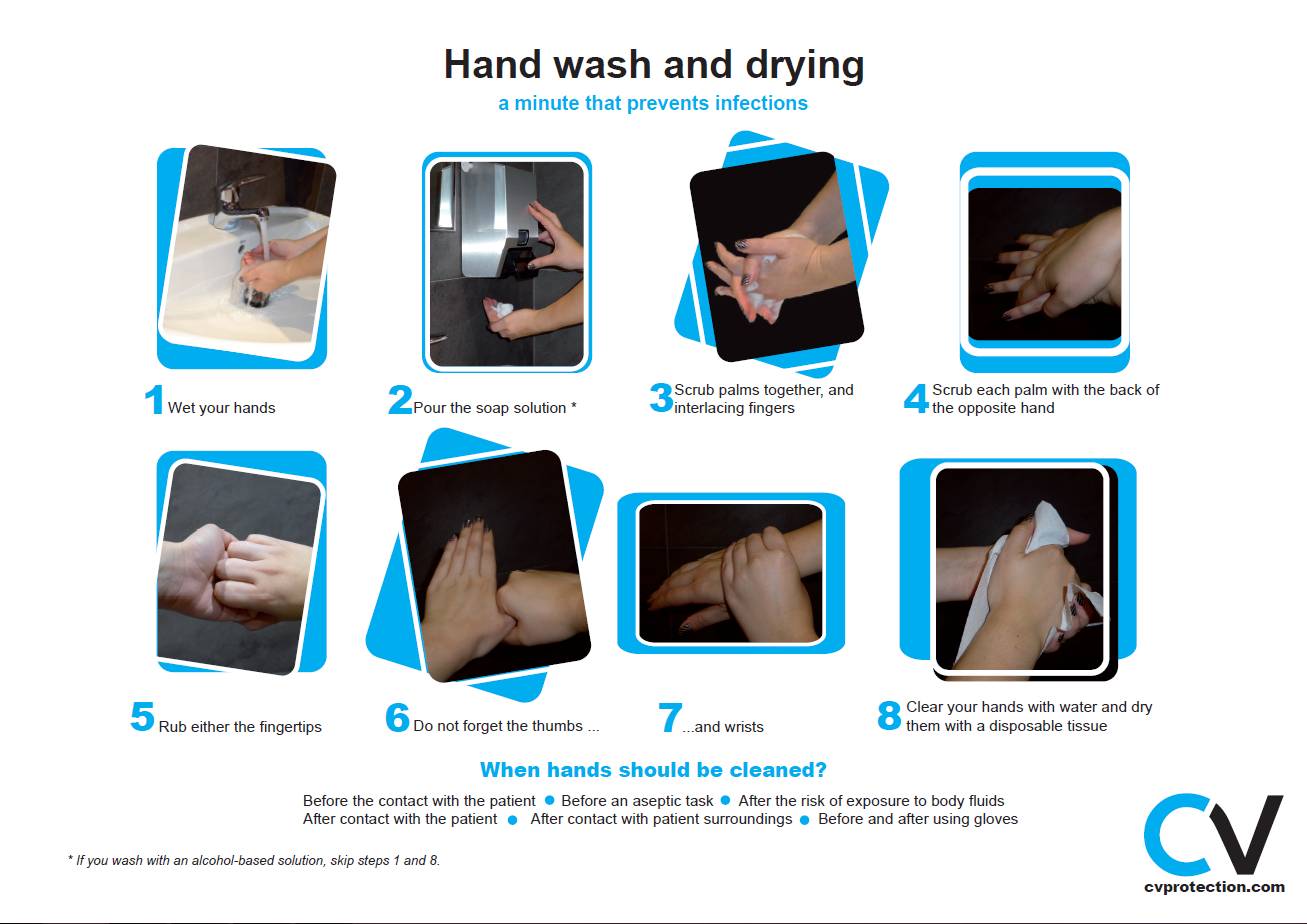The holidays are over, we return to work and normal routines are restarted. For the health sector, one of the most important routines is the correct washing and drying of the hands. Therefore, we want to help these professionals to refresh their memory with this article.
First, we must explain why it is important a good hand hygiene in the healthcare sector. According to studies by the World Health Organization, WHO, incorrect or inefficient washing is the main cause of healthcare associated Infections (HAI). HAIs are those general or localized infectious processes that occur as a result of health care, which were not present or incubating at the time of hospitalization, including patient care and infections detected after discharge.
According to data from WHO, it is estimated that the percentage of patients affected by HAIs in developed countries ranges between 5 and 10%, with greater risk in patients in intensive care units and may affect from 9 to 37% of them.
Types of flora on hands
The mentioned in the previous paragraph is also known as cross-infection, ie, infection from patient to patient via the hands of professionals. A microorganisms acquired in their hands by health professionals during direct contact with patients or with the objects around them, are called transient flora. It is proven that hand hygiene is the simplest and most effective method to reduce HAIs.
But the truth is that health professionals wash their hands half than they should, due, mainly, to the following causes: ignorance of the problem, too much work, the limited availability of washing points, the non-appearance (or no consciousness) of dirty hands, skin irritations caused by laundry products, etc.
A very visual and clarifier example of the “invisible dirt” in hands is observed in this photo:
The Department of Preventive Medicine of the University of Navarra made this photograph that shows the dirty areas of the hands, using ultraviolet light, because of the World Handwashing Day (May 5).
In CV Protection we have the equipment for this test available, very useful in preventive medicine departments of hospitals, areas where we have to verify the absence of transient flora, trainings of hand hygiene for the staff, etc. For more information, please get in touch with us.
Types of hand hygiene
Although there are various classifications in this regard, we propose the one used by Osakidetza:
- Hygienic hand-wash (with soap and water)
- Hand antisepsis
2.1. hand-wash with antiseptic soap
2.2. hand-wash with alcohol-based solution
2.3. surgical antisepsis
2.3.1. Surgical wash with antiseptic soap
2.3.2. Surgical antisepsis with alcohol-based solution
Once clarified the key concepts, we should specify that we only are going to go into detail about the process of hygienic hand washing.
When hand should be cleaned?
1. Before the contact with the patient.
2. Before an aseptic task.
3. After the risk of exposure to body fluids.
4. After contact with the patient.
5. After contact with patient surroundings.
6. Before and after using gloves.
How should you wash your hands?
As we have seen, it is very important to take your time on your hands cleaning. Experts recommend that this process must last between 40 and 60 seconds, following 8 simple steps:
1. Remove watches, rings, bracelets, etc. and wet your hands. Remember that the use of these accessories is strongly discouraged during the course of the workday.
2. Pour the soap solution (pH neutral or slightly acidic).
3. Scrub palms together, and interlacing fingers.
4. Scrub each palm with the back of the opposite hand.
5. Rub either the fingertips together.
6. Do not forget the thumbs …
7. … and wrists.
8. Finally, clear your hands with water and dry them with a disposable tissue. Hand dryers and drying reusable elements are conducive to germs and bacteria proliferation.
* If washing is done with a alcohol-based solution, steps 1 and 8 are excluded from the process (total duration 20-30 seconds).
It is very important to close the tap with the paper before throwing it (if not have a foot or elbow operated system) because if we touch it after washing, hands would be contaminated again.
To see this process in a more visual way, we offer you the following poster:
 /
/  /
/  /
/  /
/ 





